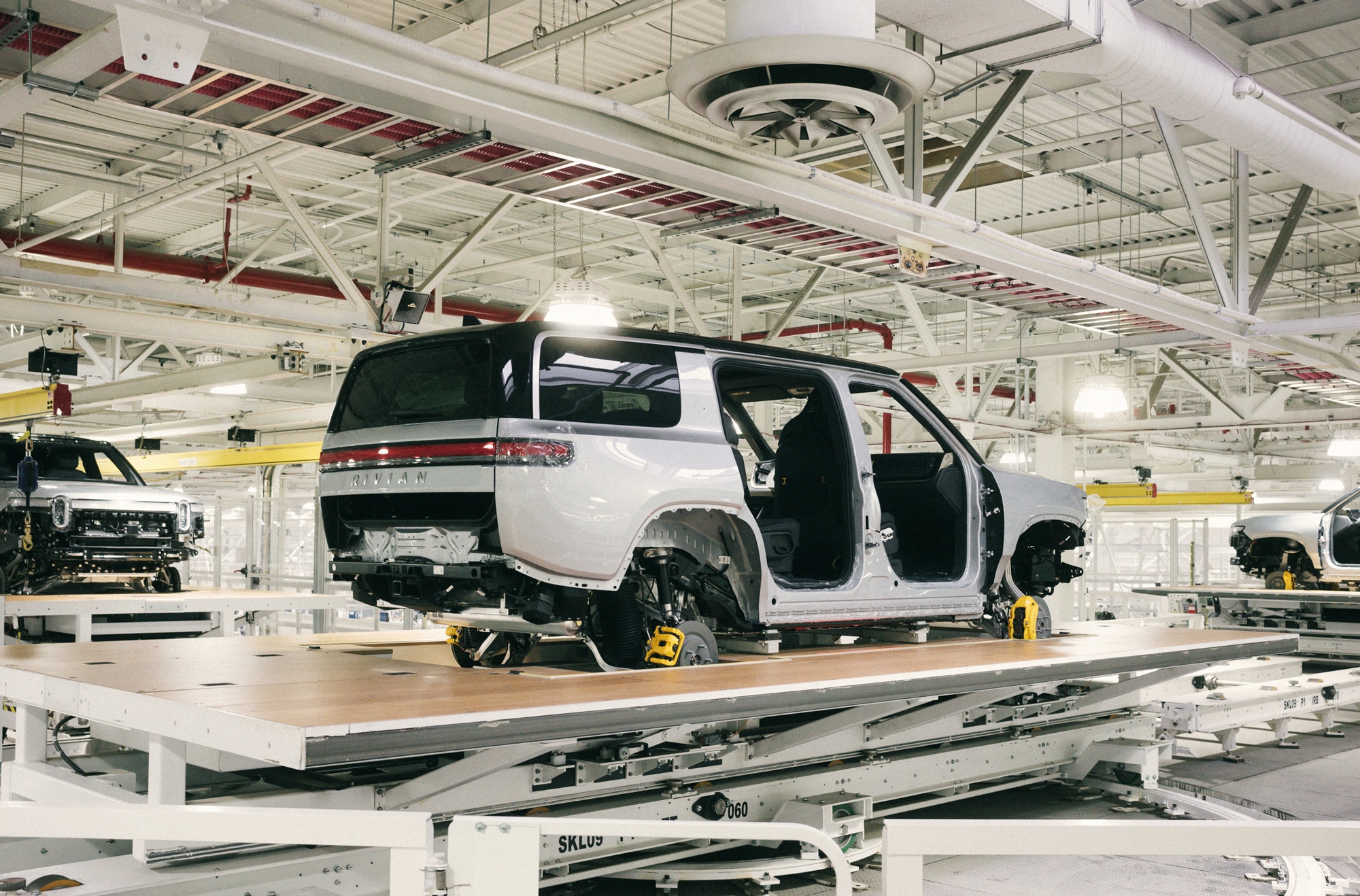Are New Cars and Trucks Getting Heavier?
After a fuel-economy-inspired diet in the mid-2000s, new cars are packing on pounds again.
 Rivian
Rivian
If you’ve ever had the serendipitous experience of watching a brand-new Honda Civic roll down the street alongside a first-generation Civic, it’s probably no surprise to hear that new cars are bigger and heavier now than they were 10, 20, or 40 years ago. If not, take the Environmental Protection Agency’s (EPA’s) word for it: They’ve been collecting data on the weight of new vehicles since 1975, and they say the average new car in 2021 weighs 4,287 lbs, up from 4,060 lbs in the mid-70s.
But the change isn’t as simple as a steady increase in both the size and weight of new cars. For the last 45 years, new vehicle weights have trended up and down along with seismic changes in the economy and automotive technology. When the EPA first started collecting data, sedans and wagons were trending lighter, while trucks and SUVs were getting heavier. But the high gas prices of the late 1970s and the country’s first fuel economy regulations put pressure on automakers to shave weight from vehicles across their lineups in pursuit of better fuel economy. The weight of the average new vehicle decreased by 21% between 1975 and 1981 to 3,202 lbs.
How car weight changed over time
From the mid-1980s through the mid-2000s, the average vehicle weights climbed steadily across automotive categories. But another spasm of high fuel prices and economic malaise sent automakers back to the cutting room, and car weights plateaued for several years before starting to increase again post-2015. Pickup trucks were the exception to this trend—as a class, they packed on mass at a relatively steep rate from the late 1980s until Ford’s 2015 launch of a leaner, aluminum-bodied F-150 forced a paradigm shift in that segment.
These days, the relationship between the weight of the average new vehicle and external pressures in America (like gas prices and fuel economy rules) is more complicated. More buyers are choosing SUVs and trucks rather than the sedans and wagons that dominated the roads in the 20th century, so a larger proportion of today’s new-vehicle fleet is made up of big, heavy vehicles than it was in the past. The average weight of a new car has increased 3% since 1975 even as the weights of sedans, wagons, and small crossovers have decreased.
Electric and hybrid vehicle impacts on car weight
The advent of hybrid and electric vehicles (EVs) has changed the picture, too. The batteries and electric motors allow hybrids and EVs to achieve fuel efficiency that automakers could hardly have dreamed of in the 1970s, but they make the cars that carry them disproportionately heavy. EV start-up Rivian's R1T full-size pick-up weighs 6,950 lbs, more than 1,000 lbs more than the heaviest F-150.
EVs now account for not quite 4% of the U.S. new car market, but that rate is growing fast. Some predictions say EVs and plug-in hybrids could make up over 25% of the market by 2030. So even though gas prices are high and fuel economy rules are tightening, odds are that the weight of the average new vehicle is going to keep rising.



